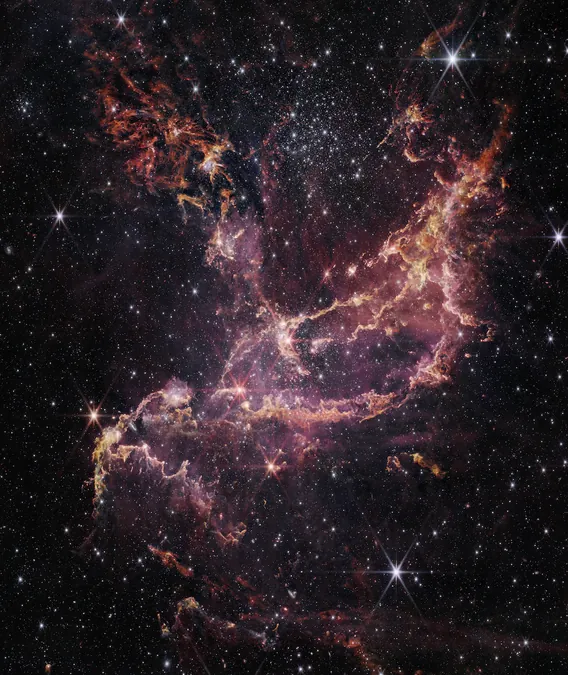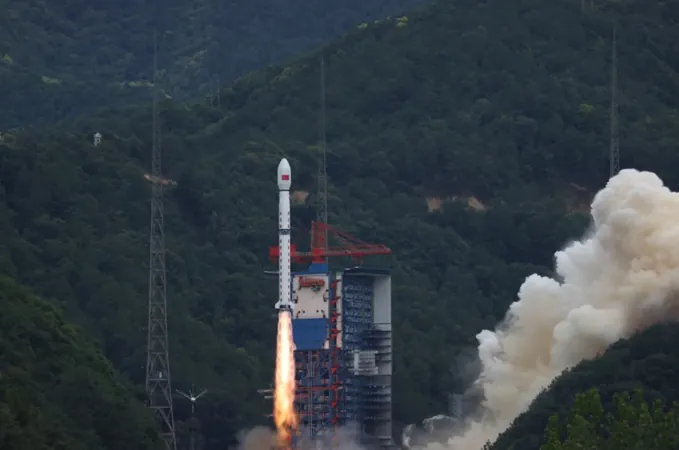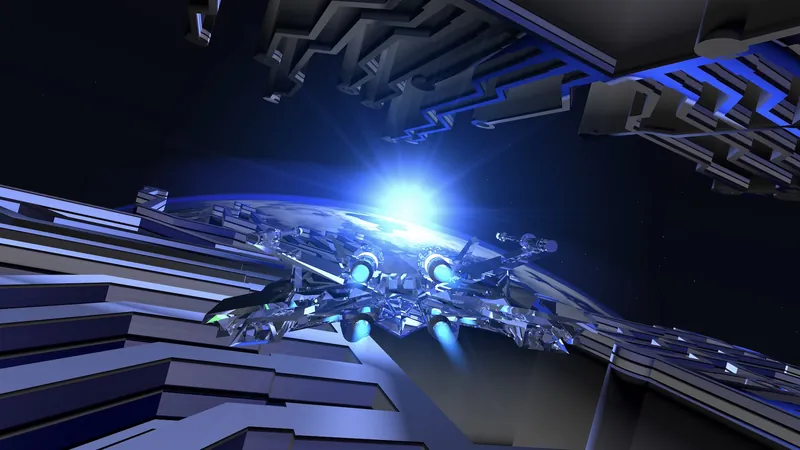
Unveiling Cosmic Secrets: JWST Captures Stunning Images of NGC 346
2025-06-03
Author: Ming
The Mystery of Planet Formation
Astronomy has long grappled with one fundamental question: How did we get here? This seemingly simple inquiry reveals a web of complexities, from the universe's inception to the formation of stars and their planetary systems. The quest to understand how life and intelligence emerged from these processes has driven scientists' curiosity for decades.
JWST: A Game Changer in Astronomy
The James Webb Space Telescope (JWST) was launched with high hopes of unlocking the secrets of planet formation. And guess what? It has delivered! Researchers have unearthed compelling evidence suggesting that planets in the early universe formed over remarkable timescales, contradicting previous assumptions.
Challenging Previous Beliefs
Traditionally, astronomers focused on regions of the Milky Way that resemble our solar system to study planetary development. These studies indicated that planet-forming disks typically last for only 2 million years, a short window for dust particles to coalesce into planetary bodies. This time limit seemed inadequate for the vast majority of stars that formed billions of years ago, when dust was scarce.
A Hubble Revelation
Enter the Hubble Space Telescope, which cast doubt on existing theories. In a groundbreaking 2003 discovery, Hubble identified a massive planet orbiting a neutron star-white dwarf pair in the Milky Way’s globular cluster M4—an area with low metal content. If such a planet could form there, what did that mean for our understanding of planet formation?
Digging Deeper into NGC 346
As if that weren’t enough, Hubble also surveyed the young star cluster known as NGC 346 in the Small Magellanic Cloud (SMC)—a neighboring galaxy with significantly lower metal levels. Hubble discovered about 200 stars in this cluster, all under 30 million years old, that appeared to have planet-forming disks, raising eyebrows in the astronomical community.
JWST Confirms and Complicates
Now, fast forward to JWST. Team leader Guido De Marchi confirmed Hubble’s findings using the telescope’s Near-Infrared Spectrograph to analyze ten Sun-like stars aged between 20 and 30 million years in NGC 346. The data revealed molecular hydrogen, shedding light on the existence of circumstellar disks—an exciting affirmation of the earlier observations.
Rethinking Planetary Development
De Marchi stated, "With Webb, we have a really strong confirmation of what we saw with Hubble. We must rethink how we model planet formation and early evolution in the young universe." This finding provides astronomers with fresh insights into how planets might have a longer developmental period around stars with low metal content than previously believed.
A Bright Future for Cosmic Exploration
As we step into a new era of astronomical understanding, researchers ponder exciting possibilities—like stars in metal-poor regions starting their lives in larger gas clouds, facilitating the formation of bigger disks. With each new discovery, JWST continues to expand our comprehension of the cosmos, putting us one step closer to answering humanity’s timeless questions.



 Brasil (PT)
Brasil (PT)
 Canada (EN)
Canada (EN)
 Chile (ES)
Chile (ES)
 Česko (CS)
Česko (CS)
 대한민국 (KO)
대한민국 (KO)
 España (ES)
España (ES)
 France (FR)
France (FR)
 Hong Kong (EN)
Hong Kong (EN)
 Italia (IT)
Italia (IT)
 日本 (JA)
日本 (JA)
 Magyarország (HU)
Magyarország (HU)
 Norge (NO)
Norge (NO)
 Polska (PL)
Polska (PL)
 Schweiz (DE)
Schweiz (DE)
 Singapore (EN)
Singapore (EN)
 Sverige (SV)
Sverige (SV)
 Suomi (FI)
Suomi (FI)
 Türkiye (TR)
Türkiye (TR)
 الإمارات العربية المتحدة (AR)
الإمارات العربية المتحدة (AR)